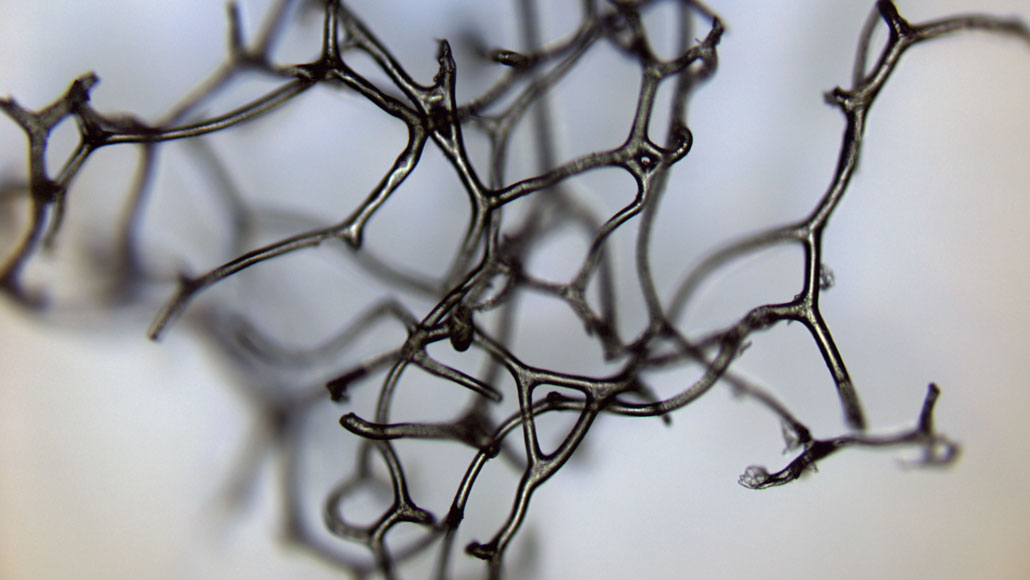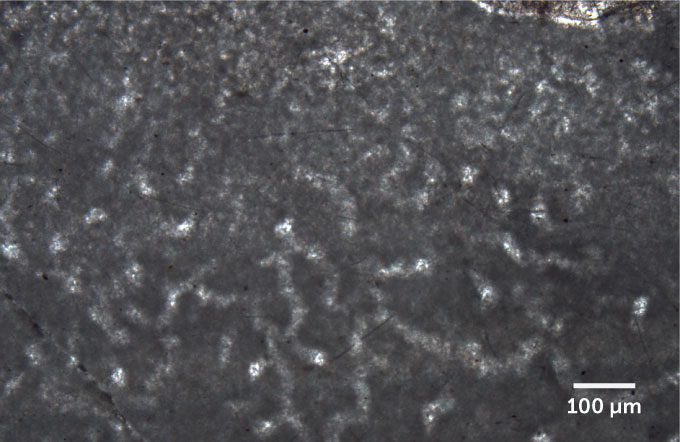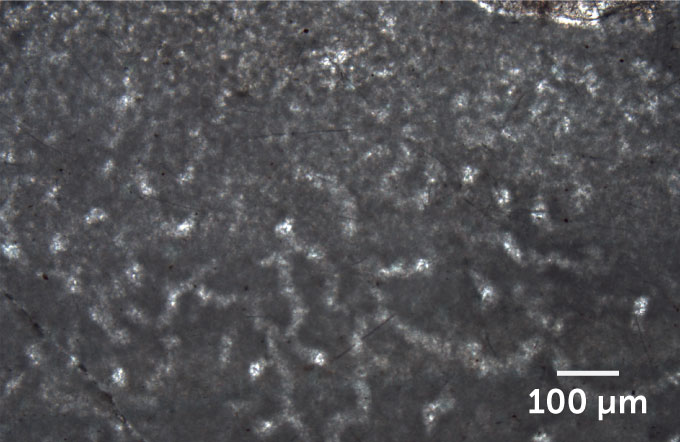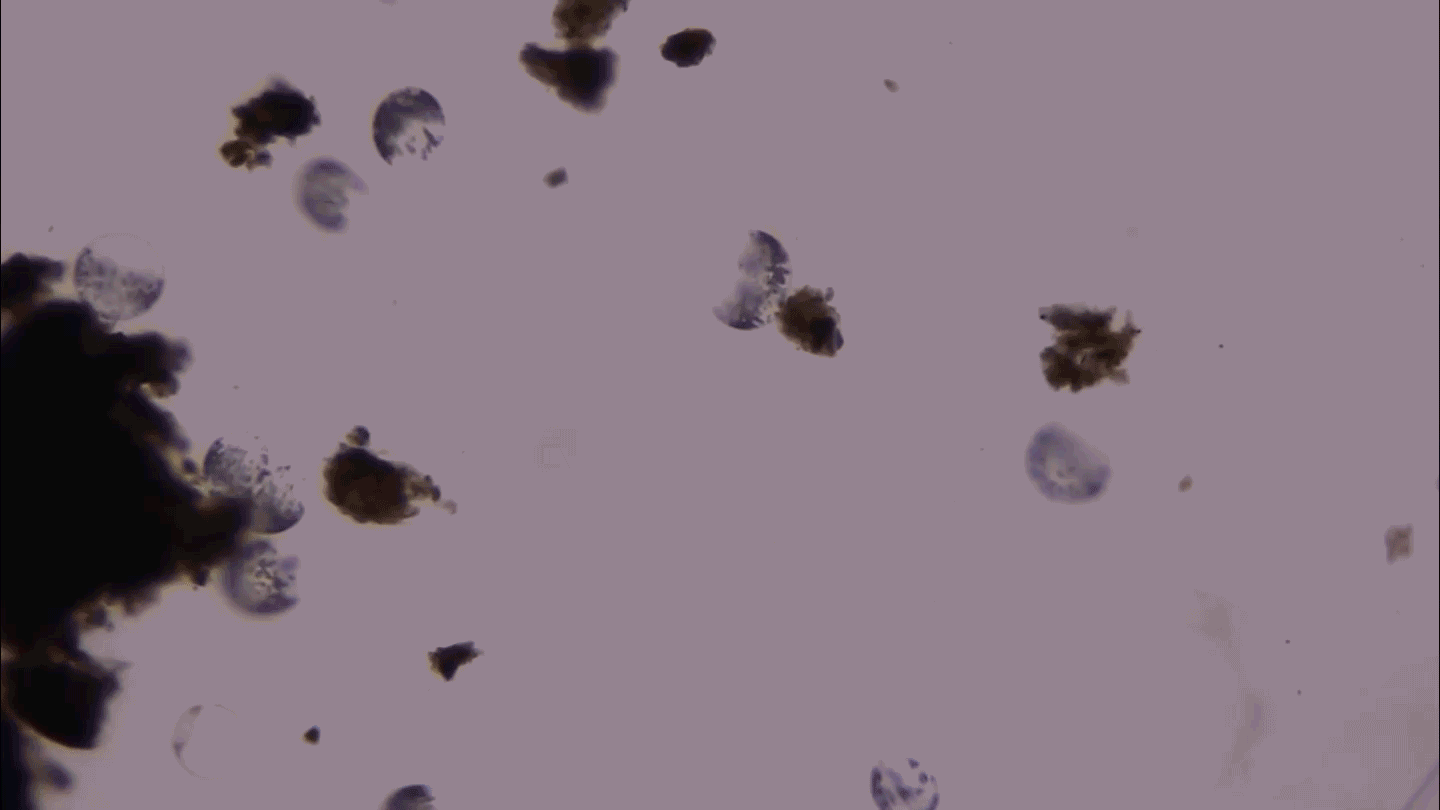If confirmed, tubes in 890-million-year-old rock may be the oldest animal fossils
If the fossils turn out to be sea sponges, they’d mark a remarkably early start to animal life

This fragment of the skeleton of a modern bath sponge (Spongia officinalis) highlights the animal’s 3-D meshwork. A putative ancient sponge sports a similar structure, a new study claims.
E.C. Turner/Nature 2021
Pale, wormlike tubes in 890-million-year-old rock may be ancient sea sponges, a new study concludes. If confirmed, that controversial claim would push back the origin of the earliest sponges by about 350 million years and make the tiny squiggles the oldest known fossils of animals, by far.
Crucially, these fossils would imply that animals emerged in environmental conditions previously thought unworkable for animal life, geologist Elizabeth Turner reports July 28 in Nature.
Early in Earth’s history, the ocean mostly lacked oxygen. It wasn’t until a large pulse of the gas to the atmosphere about 800 million to 540 million years ago, known as the Neoproterozoic Oxidation Event, brought atmospheric oxygen levels to within 10 to 50 percent of modern levels, boosting the amount of oxygen in surface ocean waters (SN: 12/11/19). “But sponges are different from other animals,” says Turner, of Laurentian University in Sudbury, Canada. “Some sponges in the modern world and in the rock record are known to be tolerant of comparatively low oxygen relative to modern ocean levels.”
Until now, the earliest, unambiguous fossils of sponges date to about 540 million years ago to the beginning of the Cambrian Period, when an extreme burst in the evolution of animal diversity took place (SN: 7/29/13). Some other animals are known from just a bit earlier, but go too much further back in time and identities become less clear (SN: 3/9/15). Based on genetic data and their relative simplicity, sponges are generally thought to have been the earliest form of animal life.
Sign up for our newsletter
We summarize the week's scientific breakthroughs every Thursday.
But some scientists aren’t convinced that the newly described tubes are sponge fossils. “Organisms from anywhere on the tree of life can make wiggly, little [branching and rejoining] structures,” says Jonathan Antcliffe, a paleobiologist at the University of Lausanne in Switzerland. The fossils lack features such as mineralized skeletal parts called spicules that would identify the creatures as sponges, he says.
What’s more, the finding “doesn’t fit with everything we know about the whole [ocean] ecosystem” in regards to nutrient, biomineral and oxygen availability before the Cambrian Period, Antcliffe says. “Everything we know about the Earth’s oceans in this interval of time tells us that animals originated around 540 [to] 550 million years ago. It’s a legion of evidence, and to overturn such an enormously strong paradigm, you need more than ‘might be a sponge.’”
Turner first found the network of tubes in 1992 in rocks from the ancient Little Dal cyanobacteria reef in Canada’s Mackenzie Mountains. “I found this thing that was totally out of place,” she says. “It was much more complex in terms of its structure than anything that could be made by cyanobacteria.”


She would have reported the curious squiggles then, but without much else to tie them to sponges besides a general resemblance, Turner moved on. But after more recent research showed that sponges could be preserved in rock similarly to the Little Dal’s pallid wiggles, she returned to her find.
Turner argues that many modern sponges don’t have spicules and that the newly described fossils may be similar. And she suggests that sponges predating the Neoproterozoic Oxidation Event may have scraped out an existence in “oxygen oases” along microbial reefs, living in holes and reef flanks and not competing with cyanobacteria for space.
It’s possible that early sponges emerged much earlier than the rest of animal life and remained in a kind of “evolutionary stasis” in low-oxygen conditions, she says, with the evolution of later, more complex animals having to wait until the gas became more abundant.
Scientists have known about odd types of fossils in the Little Dal reef for a while, says James Schiffbauer, a paleobiologist at the University of Missouri in Columbia who wasn’t involved in the research. And “we’ve expected from molecular clocks that sponges should be present earlier in the Neoproterozoic [Era],” he adds, referring to genetic analyses that estimate that sponges evolved well before the Cambrian Period. “It has just been a matter of finding them if they were indeed preserved.”
Future research could help confirm the fossils’ identity. Turner plans to work more with the ancient tubes, adding that more answers may come from looking in the right places. “We need to be looking for similar material with a really open mind in rocks of similar age, and we need to be looking for more complex animal evidence in them as well,” rather than just simpler organisms like microbes.







